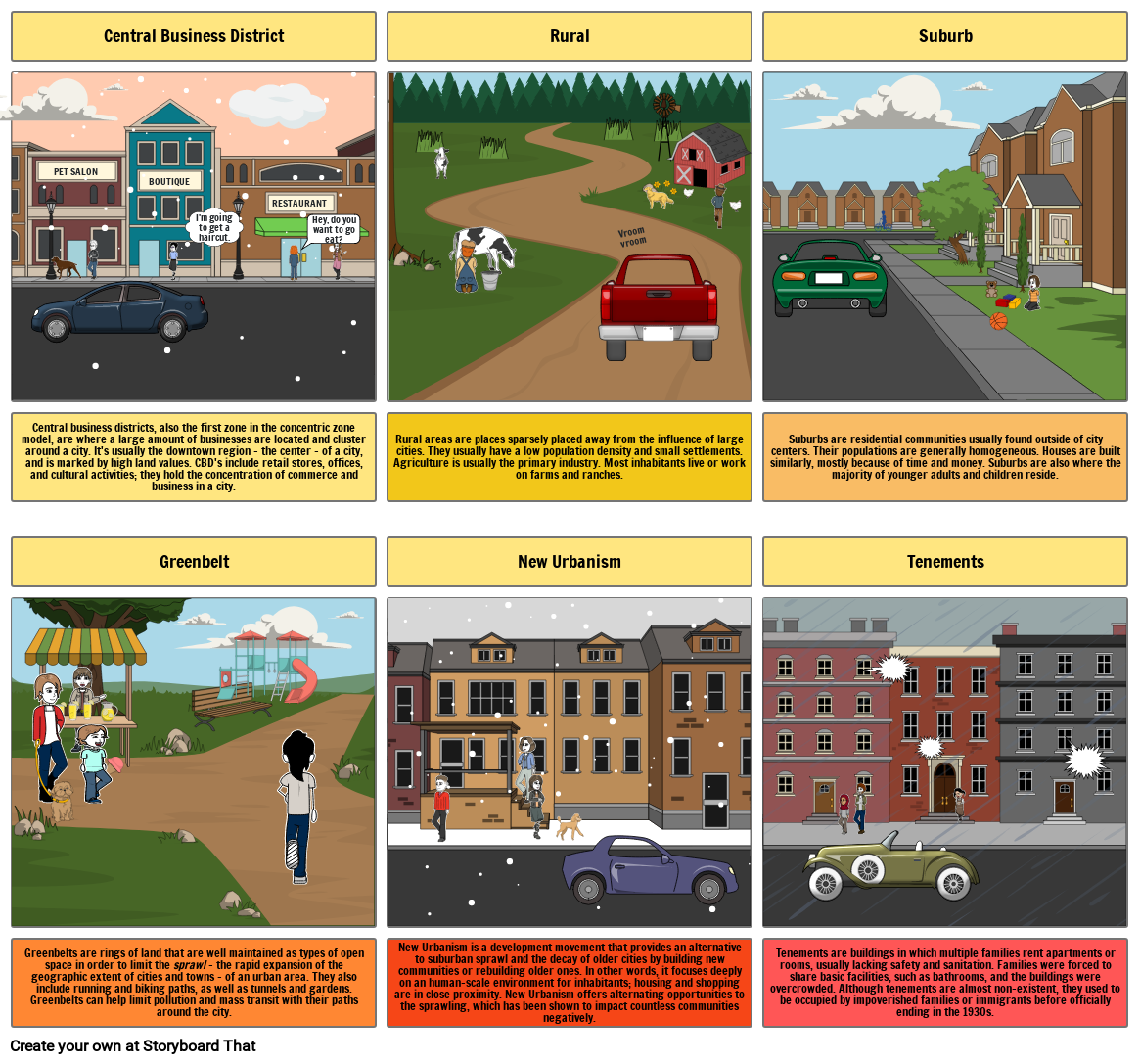AP Hug Urbanization Project

Storyboard Text
- Central Business District
- PET SALON
- BOUTIQUE
- I'm going to get a haircut.
- RESTAURANT
- Hey, do you want to go eat?
- Rural
- Vroom vroom
- Suburb
- Central business districts, also the first zone in the concentric zone model, are where a large amount of businesses are located and cluster around a city. It's usually the downtown region - the center - of a city, and is marked by high land values. CBD's include retail stores, offices, and cultural activities; they hold the concentration of commerce and business in a city.
- Greenbelt
- Rural areas are places sparsely placed away from the influence of large cities. They usually have a low population density and small settlements. Agriculture is usually the primary industry. Most inhabitants live or work on farms and ranches.
- New Urbanism
- Suburbs are residential communities usually found outside of city centers. Their populations are generally homogeneous. Houses are built similarly, mostly because of time and money. Suburbs are also where the majority of younger adults and children reside.
- Tenements
- Greenbelts are rings of land that are well maintained as types of open space in order to limit the sprawl - the rapid expansion of the geographic extent of cities and towns - of an urban area. They also include running and biking paths, as well as tunnels and gardens. Greenbelts can help limit pollution and mass transit with their paths around the city.
- New Urbanism is a development movement that provides an alternative to suburban sprawl and the decay of older cities by building new communities or rebuilding older ones. In other words, it focuses deeply on an human-scale environment for inhabitants; housing and shopping are in close proximity. New Urbanism offers alternating opportunities to the sprawling, which has been shown to impact countless communities negatively.
- Tenements are buildings in which multiple families rent apartments or rooms, usually lacking safety and sanitation. Families were forced to share basic facilities, such as bathrooms, and the buildings were overcrowded. Although tenements are almost non-existent, they used to be occupied by impoverished families or immigrants before officially ending in the 1930s.
Over 30 Million Storyboards Created

